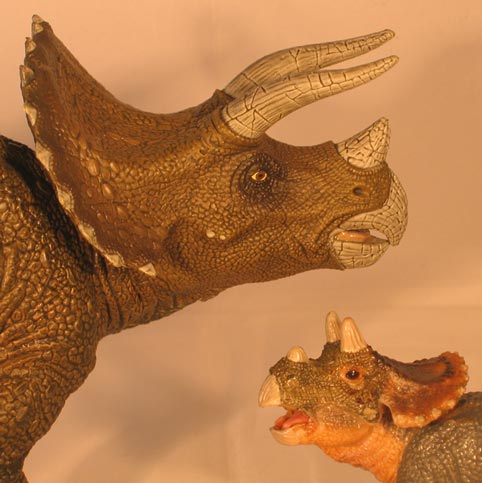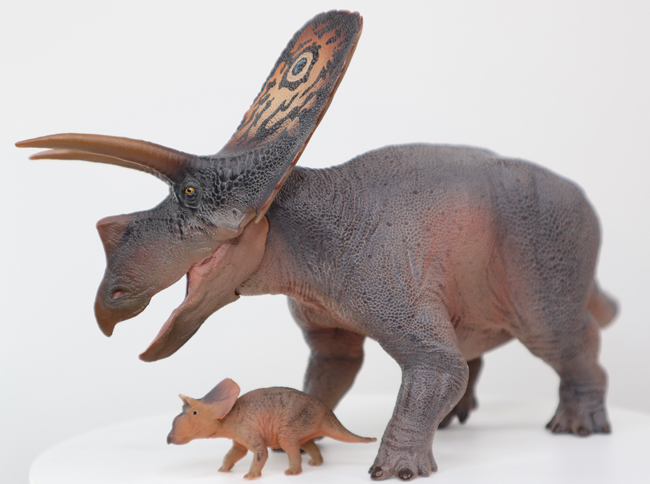Allometric Growth – A Helpful Explanation
We received an email earlier this week with an enquiry about the term allometric growth which had been found in a scientific paper the emailer had been reading. Our emailer wrote to ask what did this term mean?
Allometric growth is a term used to describe the growth of an organism whereby different parts develop at different rates. The appearance of the organism will change as it grows and matures.

Triceratops Allometric Growth
In the picture (above) a model of a juvenile Triceratops is compared with a model of a fully-grown, mature Triceratops. In the juvenile the head is proportionately larger and the skull frill and horns are very different in their morphology compared to the adult. This is an example of allometric growth. Allometry is the study of body size relative to body shape, it is often partnered in scientific papers with ontogeny which is the term used to describe how organisms develop and grow.
The Chinese model-making company PNSO have recently introduced some replicas that demonstrate how dinosaurs changed as they grew and matured. For example, the company recently introduced (2022), a 1:35 scale replica of an adult chasmosaurine ceratopsian (Torosaurus latus) and a juvenile. The models, entitled Aubrey and Dabei were supplied with posters and a full-colour, illustrated booklet.

To view the range of PNSO models and figures available from Everything Dinosaur: PNSO Age of Dinosaurs.
Back in 2019, Everything Dinosaur received an almost identical enquiry about how to define allometric growth. At the time, we wrote a short blog post highlighting our explanation.
To read our earlier article: Defining Allometric Growth.

